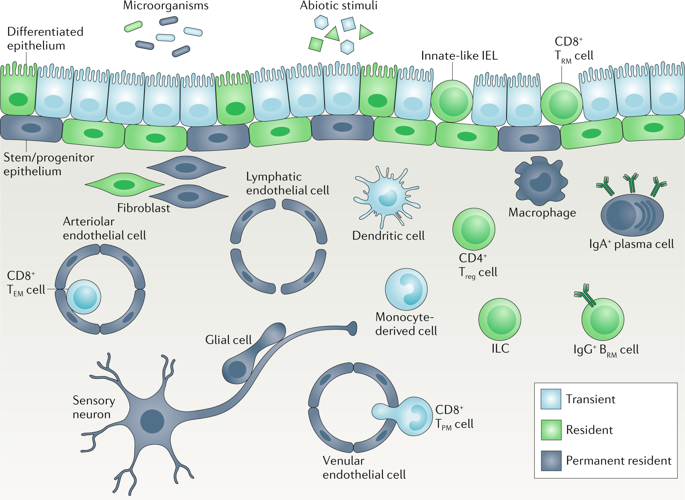当前位置:
X-MOL 学术
›
Nat. Rev. Immunol.
›
论文详情
Our official English website, www.x-mol.net, welcomes your feedback! (Note: you will need to create a separate account there.)
Distribution and storage of inflammatory memory in barrier tissues.
Nature Reviews Immunology ( IF 100.3 ) Pub Date : 2020-02-03 , DOI: 10.1038/s41577-019-0263-z Jose Ordovas-Montanes 1, 2, 3, 4, 5, 6, 7 , Semir Beyaz 8 , Seth Rakoff-Nahoum 1, 5, 9 , Alex K Shalek 2, 3, 4, 5, 6, 7, 10
Nature Reviews Immunology ( IF 100.3 ) Pub Date : 2020-02-03 , DOI: 10.1038/s41577-019-0263-z Jose Ordovas-Montanes 1, 2, 3, 4, 5, 6, 7 , Semir Beyaz 8 , Seth Rakoff-Nahoum 1, 5, 9 , Alex K Shalek 2, 3, 4, 5, 6, 7, 10
Affiliation

|
Memories of previous immune events enable barrier tissues to rapidly recall distinct environmental exposures. To effectively inform future responses, these past experiences can be stored in cell types that are long-term residents or essential constituents of tissues. There is an emerging understanding that, in addition to antigen-specific immune cells, diverse haematopoietic, stromal, parenchymal and neuronal cell types can store inflammatory memory. Here, we explore the impact of previous immune activity on various cell lineages with the goal of presenting a unified view of inflammatory memory to environmental exposures (such as allergens, antigens, noxious agents and microorganisms) at barrier tissues. We propose that inflammatory memory is distributed across diverse cell types and stored through shifts in cell states, and we provide a framework to guide future experiments. This distribution and storage may promote adaptation or maladaptation in homeostatic, maintenance and disease settings - especially if the distribution of memory favours cellular cooperation during storage or recall.
中文翻译:

炎症记忆在屏障组织中的分布和储存。
对先前免疫事件的记忆使屏障组织能够快速回忆不同的环境暴露。为了有效地告知未来的反应,这些过去的经验可以存储在长期居民或组织基本成分的细胞类型中。一种新的认识是,除了抗原特异性免疫细胞外,各种造血细胞、基质细胞、实质细胞和神经元细胞类型都可以储存炎症记忆。在这里,我们探讨了先前免疫活动对各种细胞谱系的影响,目的是对屏障组织中环境暴露(如过敏原、抗原、有毒物质和微生物)的炎症记忆提出统一的看法。我们提出炎症记忆分布在不同的细胞类型中,并通过细胞状态的变化存储,我们提供了一个框架来指导未来的实验。这种分布和存储可能会促进稳态、维持和疾病环境中的适应或适应不良——特别是如果记忆的分布有利于存储或回忆期间的细胞合作。
更新日期:2020-02-03
中文翻译:

炎症记忆在屏障组织中的分布和储存。
对先前免疫事件的记忆使屏障组织能够快速回忆不同的环境暴露。为了有效地告知未来的反应,这些过去的经验可以存储在长期居民或组织基本成分的细胞类型中。一种新的认识是,除了抗原特异性免疫细胞外,各种造血细胞、基质细胞、实质细胞和神经元细胞类型都可以储存炎症记忆。在这里,我们探讨了先前免疫活动对各种细胞谱系的影响,目的是对屏障组织中环境暴露(如过敏原、抗原、有毒物质和微生物)的炎症记忆提出统一的看法。我们提出炎症记忆分布在不同的细胞类型中,并通过细胞状态的变化存储,我们提供了一个框架来指导未来的实验。这种分布和存储可能会促进稳态、维持和疾病环境中的适应或适应不良——特别是如果记忆的分布有利于存储或回忆期间的细胞合作。



























 京公网安备 11010802027423号
京公网安备 11010802027423号